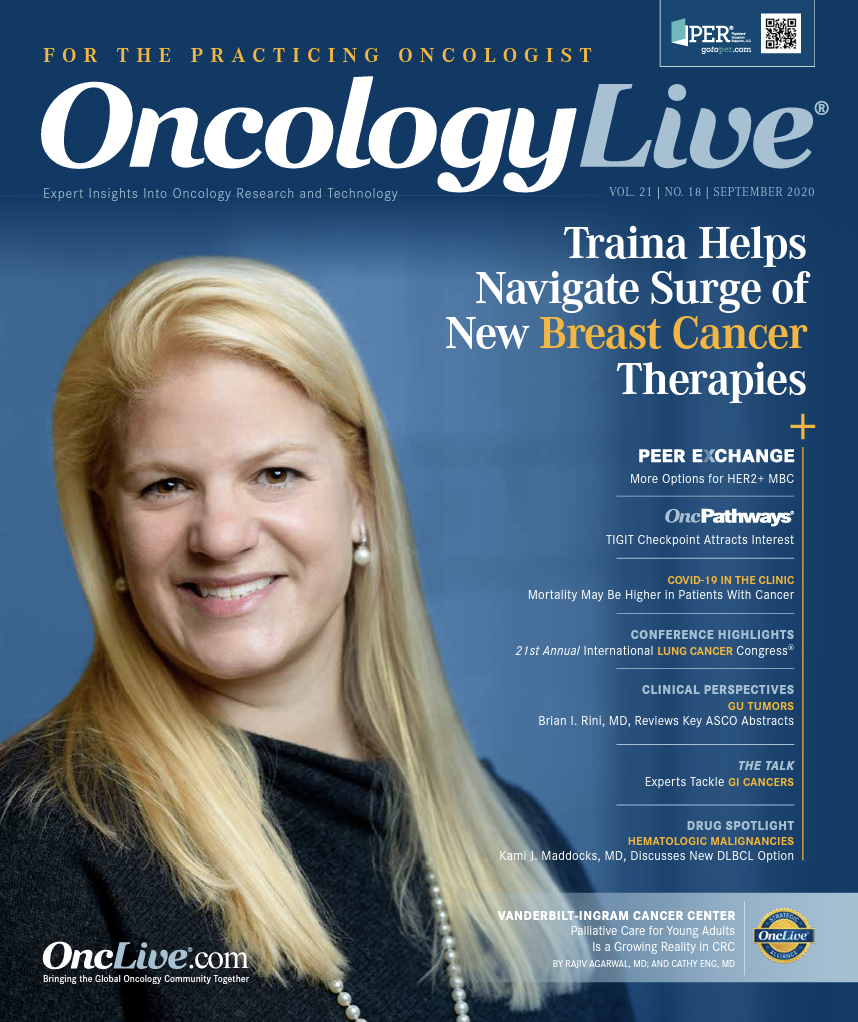Publication
Article
Oncology Live®
Study Endorses Benefits of Population-Based BRCA Screening
Author(s):
Implementing population-based BRCA1/2 testing is not only cost-effective in high- and upper middle–income countries but could also prevent tens of thousands of breast and ovarian cancer cases compared with the current clinical strategy, which recommends testing only for high-risk women.

Implementing population-based BRCA1/2 testing is not only cost-effective in high- and upper middle–income countries but could also prevent tens of thousands of breast and ovarian cancer cases compared with the current clinical strategy, which recommends testing only for high-risk women, according to new data from an international study.
Investigators of the research effort, led by Queen Mary University of London in England, sought to compare the cost-effectiveness and preventive impact of BRCA testing in a broader population versus standard testing practice in countries considered high-income (HIC), including the United Kingdom (UK), United States (US), and Netherlands; upper middle–income (UMIC), China and Brazil; and low middle–income (LMIC), India. Investigators conducted separate analyses for population-based BRCA screening in HIC, UMIC, and LMIC using payer and societal perspectives and compared the cost-effectiveness and health impact of this testing format with that of clinical criteria/family history–based testing. To facilitate this research, investigators developed a Markov model to contrast the lifetime costs and effects of BRCA 1/2 testing in all women in the general population aged 30 or older.
Findings indicated that population-based testing, which would entail offering all women 30 years and older BRCA1/2 testing and classifying them as BRCA-positive or BRCA-negative, was “highly cost-effective” in HIC and UMIC from a payer perspective. In the UK, US, and Netherlands, the incremental cost-effectiveness ratio (ICER) was $21,191 per quality-adjusted life year (QALY), $16,552 per QALY, and $25,215 per QALY, respectively. This population-based approach was deemed cost-effective in UMIC, where the ICER for China was estimated at $23,485 per QALY and at $20,995 per QALY for Brazil. The proposed strategy for BRCA testing was not cost-effective in LMIC (India ICER, $32,217/QALY; Table).
To be cost-effective in LMIC such as India from a societal perspective, BRCA testing would need to decrease to approximately $172 per test (ICER, $19,685/QALY). Further, the expenses relative to BRCA testing would qualify as cost-effective in India if they fell to $95 per test (ICER, $19,670/QALY).
When evaluated in the context of local, country-specific guidelines, population-based BRCA testing was cost-effective from a payer standpoint: It saved the UK $24,066, based on an ICER per QALY; the US $16,552 (ICER/QALY); and the Netherlands $17,655 (ICER/QALY). It was also cost-saving from a societal perspective, translating to savings of $3543 in the UK (ICER/QALY, $4018 in the US (ICER/QALY), and $3185 in the Netherlands (ICER/QALY).
Table. Population-Based Testing Versus Family History-Based Testing: Cost Savings From the Payer Perspectivea,b

Study Methods
In this study, the payer perspective was limited to the expenses associated with the health care system, including the costs of genetic testing, screening, and prevention. Although some countries only take the payer perspective into account, “a societal perspective is recommended by the World Health Organization and other international bodies,” the authors wrote. A societal perspective analysis is associated with a lower ICER per QALY than a payer perspective because it incorporates additional costs connected to productivity loss. For example, the societal standpoint would include the loss of income from a patient’s inability to work whereas the payer perspective would not.
Investigators modeled the costs associated with BRCA1/2 testing versus family history-based testing over an individual’s lifetime using the Markov cycles, which depend on life expectancy starting at 30 years, and differ by country. The corresponding Markov cycles for the UK, US, Netherlands, China, Brazil, and India were 53, 52, 53, 48, 49, and 38, respectively.
Markov model outcomes included breast cancer, ovarian cancer, and the excess deaths prevented by coronary heart disease (CHD). The lifetime costs and QALYs were estimated with population testing and family history testing, and the ICER was calculated by dividing the difference in cost by the difference in health effects between these 2 testing methodologies
Lifetime Population Impact
To assess the lifetime population impact of population-based BRCA screening, investigators evaluated the reduction in breast and ovarian cancer cases and deaths, as well as excess deaths from CHD, that would result from the implementation of broader-scale testing. Two of the preventive options afforded to BRCA-mutation carriers include risk-reducing mastectomy and risk-reducing salpingo-oophorectomy. All women undergoing risk-reducing salpingo-oophorectomy have an increased risk of fatal CHD, hence the investigators’ choice to evaluate this outcome.
Regarding the diagnoses that could be spared with population-based BRCA testing, investigators found that 2319 to 2666 breast cancer and 327 to 449 ovarian cancer cases could be prevented per million-women. Stratified by country, this population-based approach could prevent an additional 57,708 breast cancer cases in the UK; 269,089 in the US; 15,181 in the Netherlands; 1,050,314 in China; 156,299 in Brazil; and 692,571 in India. It would spare a corresponding 9727; 43,817; 2,557; 154,756; 25,170; and 97,659 ovarian cancer cases, respectively. Investigators added that the benefit may be even greater than these data project due to the “huge underutilization of BRCA testing, along with limited access and uptake associated with current treatment pathways,” which could lead to an underestimation of the cases that could potentially be prevented with this broader approach.
BRCA Testing is Underutilized
Inherited BRCA1/2 mutations drive about 10% to 20% of ovarian cancer cases and 6% of breast cancer diagnoses. Women who harbor BRCA1/2 mutations have a 17% to 44% risk and a 69% to 72% risk of developing ovarian cancer and breast cancer, respectively.
Although those in the oncology field recognize the prognostic implications of BRCA1/2 alterations and their actionability, globally, clinical guidelines only support genetic testing for high-risk women who meet certain criteria, such as having a strong family history of breast or ovarian cancer, and testing nevertheless remains underutilized. For example, more than 50% of BRCA-mutation carriers do not meet the clinical criteria to qualify for testing, and only 20% of eligible women in the United States have undergone genomic screening. Additionally, in the United Kingdom, more than 97% of BRCA1/2-mutation carriers have not been identified.
These clinical realities, coupled with findings from the study, support a paradigm shift toward population-based BRCA testing to maximize breast and ovarian cancer prevention, the authors concluded.
Reference
- Manchanda R, Sun Li, Patel S, et al. Economic evaluation of population-based BRCA1/BRCA2 mutation testing across multiple countries and health systems. Cancers (Basel). 2020;12(7):E1929. doi:10.3390/cancers12071929

























%20(2)%201-Recovered-Recovered-Recovered-Recovered-Recovered-Recovered-Recovered-Recovered-Recovered-Recovered-Recovered-Recovered-Recovered-Recovered-Recovered-Recovered-Recovered.jpg?fit=crop&auto=format)
%20(2)%201-Recovered-Recovered-Recovered-Recovered-Recovered-Recovered-Recovered-Recovered-Recovered-Recovered-Recovered-Recovered-Recovered-Recovered-Recovered-Recovered-Recovered.jpg?fit=crop&auto=format)
